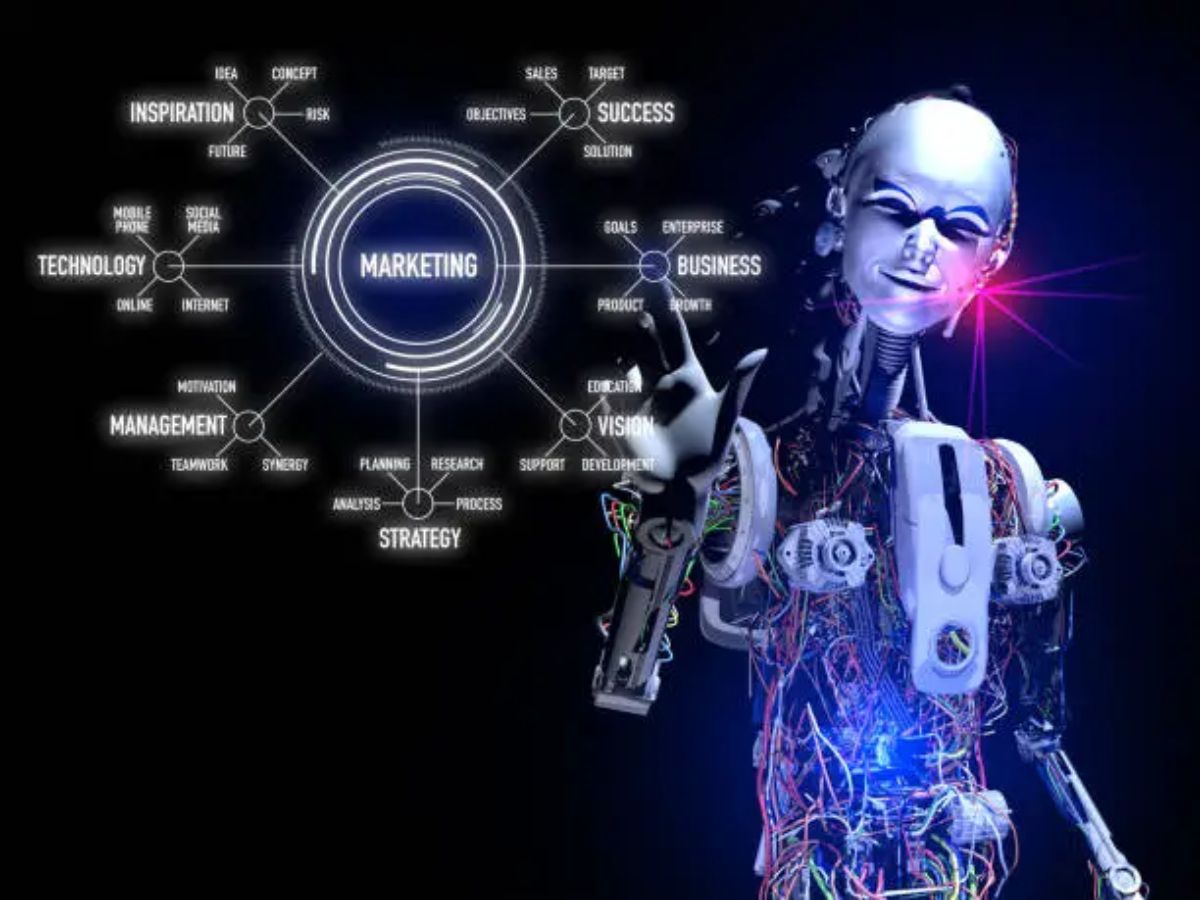Introduction: The Ad Spend Dilemma
Not long ago, a frustrated founder shared with me: “Meta is draining my budget, and Google just isn’t giving anything back.”
It wasn’t an exaggeration. The brand was pouring lakhs every month into ad platforms, yet conversions were flat, acquisition costs were skyrocketing, and profitability felt out of reach. This story is not unique. In fact, it echoes across boardrooms of D2C startups, eCommerce brands, and even larger enterprises.
Running ads is easy — anyone can launch a campaign on Meta or Google in minutes. But running ads profitably and sustaining a strong Return on Ad Spend (ROAS)? That’s the real challenge.
This is where Artificial Intelligence (AI) has stepped in. Unlike the buzzword-heavy hype, today AI isn’t just futuristic jargon — it’s a practical toolkit that’s transforming how marketers run campaigns. From budget optimization to predictive analytics, AI is giving brands the ability to spend smarter, not just bigger.
In this article, we’ll explore how AI is revolutionizing ad spends, why brands are adopting it, and how human creativity combined with machine intelligence is driving unprecedented efficiency.
Why Most Ad Campaigns Burn Money
Let’s be blunt: platforms like Meta and Google are built to maximize spending. Their algorithms are designed to distribute your budgets, but if left unsupervised, they can drain accounts without delivering meaningful ROI.
Here’s why so many campaigns end up bleeding money:
- Excessive Guesswork – Marketers often target overly broad audiences without truly understanding who’s most likely to convert.
- Delayed Reaction Time – By the time you notice poor campaign performance, thousands may already be wasted.
- Over-Reliance on Instinct – Many campaigns are based on gut feeling rather than real, data-driven insights.
- Creative Fatigue – Ads run too long without fresh testing, causing declining engagement and conversions.
The result? In many cases, 30–40% of ad budgets are wasted on unqualified clicks, impressions, or irrelevant audiences.
This is the precise problem AI is designed to fix.
What AI Brings to Performance Marketing
Forget the sci-fi imagery of robots replacing marketers. In advertising, AI is not about replacing humans — it’s about taking over the repetitive, data-heavy, and time-sensitive optimization tasks that humans cannot execute at scale.
Here’s how AI makes a difference in Meta Ads and Google Ads campaigns:
1. Audience Precision
AI goes beyond basic demographics or keyword targeting. It analyzes buyer behavior, purchase history, browsing journeys, and conversion signals to identify who’s most likely to convert. This ensures budgets aren’t wasted on random clicks.
2. Faster Creative Testing
Instead of running creative tests for weeks, AI tools analyze ad performance data in hours. They quickly highlight which headlines, CTAs, images, or videos work best and eliminate underperformers — saving significant spend.
3. Smart Budget Allocation
AI-powered bidding automatically shifts budgets from low-performing campaigns to high-performing ones in real time. Instead of bleeding money overnight, brands continuously optimize while they sleep.
4. Predictive Analytics
AI doesn’t just analyze past results; it forecasts future outcomes. For example, it can detect early signs of campaign fatigue and alert marketers before performance collapses.
Real-World Example: AI in Action
One of our D2C fashion clients was struggling with Meta Ads. Despite great products, their campaigns were messy — too many audiences, fragmented budgets, and no scaling.
We implemented AI-powered audience clustering and automated budget reallocation. Within the first month, their Cost Per Purchase dropped by nearly 20% — without increasing ad spend.
The takeaway? The same budget, when guided by AI, produced significantly higher returns.
Humans + AI: The Winning Formula
Many fear AI will replace marketers, but the truth is the opposite.
- Humans excel at strategy – understanding brand voice, emotional storytelling, and long-term positioning.
- AI excels at execution – crunching data, making instant bid adjustments, and detecting hidden trends.
When combined, brands get a hybrid performance machine: creative human strategy amplified by AI’s precision.
At Sqroot, this is exactly how we approach advertising. Strategists set the vision, while AI ensures every rupee is optimized for performance.
Why Meta and Google Are Pushing AI
If you’ve been paying attention, both Meta and Google are heavily nudging advertisers towards AI-driven campaigns:
- Google Ads → Performance Max (PMax) – Campaigns that use machine learning to optimize across Search, Display, YouTube, and Shopping.
- Meta Ads → Advantage+ Shopping Campaigns – AI-driven automation handles targeting, placements, and delivery.
Why? Because AI campaigns often yield better short-term results, which leads to advertisers spending more.
But here’s the catch: unchecked automation can overspend massively. Without proper supervision, these AI-driven campaigns can funnel budgets into unprofitable placements. That’s why brands need human oversight plus AI optimization — not blind faith.
How AI Helps with Google Ads
On Google Ads, AI brings powerful tools to improve targeting and bidding:
- Keyword Intent Recognition – AI distinguishes between informational queries (research phase) and transactional ones (buying intent). This ensures higher-quality clicks.
- Dynamic Bidding – Real-time bid adjustments per auction, based on likelihood of conversion.
- Ad Copy Optimization – AI suggests and tests ad variations to match audience behavior and boost CTR.
👉 The difference? Paying $50 per click vs. $20 per click — AI helps brands reach the latter.
How AI Helps with Meta Ads
Meta Ads benefit from AI in unique ways:
- Lookalike Expansion – AI builds advanced lookalike audiences based on high-value customers.
- Creative Fatigue Detection – AI spots declining ad performance before ROAS drops.
- Placement Optimization – AI tests whether Instagram Reels, Stories, or Facebook Feed deliver the best returns and reallocates budget accordingly.
👉 For eCommerce, these tweaks often translate into lakhs saved monthly.
The Bigger Picture: Efficiency Equals Growth
Every rupee saved on ad waste is a rupee that can be reinvested into growth.
Let’s take an example:
- Monthly Ad Spend: $12,050
- Average Waste (35%): $4,216 → Annual Waste = $50,600
- With AI Optimization: Waste reduced by 50% → Savings = $25,300
👉 That means a brand spending $12,000 a month on ads could save over $25,000 a year just by using AI-driven optimization.
- New product launches
- Influencer marketing campaigns
- Scaling winning ads
- Enhancing customer experience
This is the compounding effect AI brings — not just cost-cutting, but growth acceleration.
AI Tools and Technologies Driving Ad Optimization
Marketers today have access to a growing arsenal of AI-powered ad tech tools. Some notable examples include:
- Google Performance Max AI – Google’s machine learning optimization engine.
- Meta Advantage+ – Automates targeting and delivery on Facebook and Instagram.
- Jasper / Copy.ai – AI writing assistants that generate ad copy variations.
- Madgicx – AI tool for creative testing and performance tracking.
- Optmyzr – Google Ads optimization automation.
By integrating such tools, brands can automate the heavy lifting while marketers focus on big-picture growth strategies.
Challenges of AI in Advertising
While AI is powerful, it isn’t flawless. Brands must be aware of the potential pitfalls:
- Data Dependency – AI performs best with robust historical data. New brands with minimal traffic may see slower improvements.
- Over-Automation Risks – Blindly trusting AI without supervision can waste money on irrelevant placements.
- Creative Limitations – AI can optimize, but it cannot create brand storytelling that resonates emotionally.
- Privacy Concerns – With third-party cookies fading, AI will rely heavily on first-party and consent-driven data.
Successful adoption requires balancing automation with human expertise.
The Future of AI in Performance Marketing
Looking ahead, AI will not just optimize campaigns — it will predict consumer behavior at a deeper level.
- Hyper-Personalization – Delivering unique ads to individual users at scale.
- Voice & Conversational Ads – Optimized for AI-driven search assistants.
- Creative AI – Tools that design images and videos tailored for ad platforms.
- Cross-Channel Integration – Unified AI systems that manage performance across Meta, Google, TikTok, Amazon, and more.
Brands that adopt early will gain a significant competitive advantage in efficiency and profitability.
Wrapping It Up: Smarter Spend, Higher ROAS
The advertising landscape is evolving. Success is no longer about who spends more; it’s about who spends smarter.
AI isn’t a magic button, but it is undeniably the edge separating fast-scaling brands from stagnant ones.
For brands running serious ad budgets, the real question isn’t:
“Should we use AI?”
It’s: “How much money are we losing by not using it?”
Because while some advertisers are still guessing and wasting, the smart ones are already optimizing, scaling, and winning.

